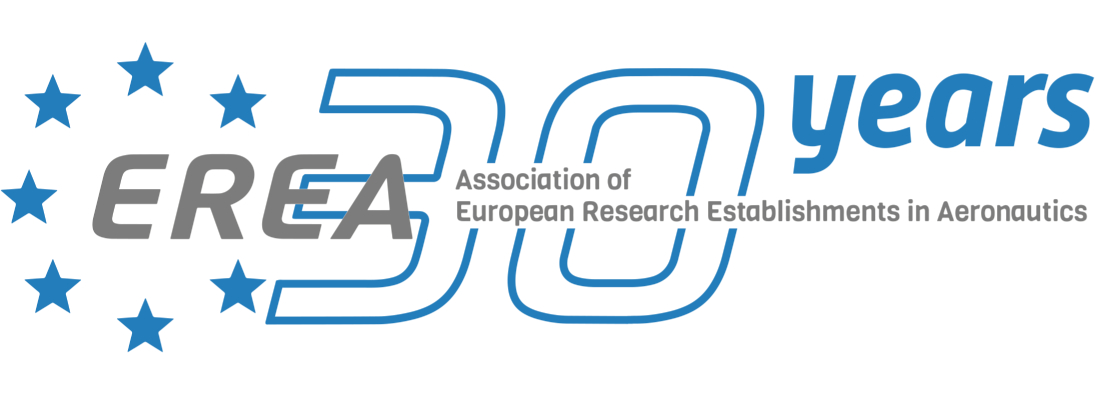
The PULSAR* (Propelling European Leadership through Synergizing Aviation Research) project, coordinated by ONERA, represents a significant step forward in European research and innovation, aligning seamlessly with the objectives of EREA‘s (Association of European Research Establishments in Aeronautics) Future Sky** Programme. With a focus on advancing technological developments to the benefit of European society and industry, PULSAR is dedicated to addressing the environmental challenges of aviation, promoting sustainable development, and enhancing the strategic autonomy of the EU. Its achievements highlight the importance of European cooperation in advancing these goals.
PULSAR’s Alignment with the Strategic Vision of Future Sky
Future Sky is an ambitious joint research initiative, launched in 2014 and updated in 2019 (and currently again in 2024), which consolidates national aviation research efforts across Europe into joint programmes to achieve the goals set forth by Flightpath 2050. By promoting collaboration among research establishments, industry, and universities, Future Sky fosters technological advancements benefiting European society and the global aviation industry. The six thematic areas of the Future Sky programme (2019 update) – safety, quiet air transport, energy, urban air mobility, security for aviation, and circular aviation – provide a comprehensive framework for addressing the multifaceted challenges of future air transport.
PULSAR’s primary objective is to support European policymakers in identifying key aviation research efforts to pursue, up to 2050 and beyond, for allowing the sector to comply with the EU environmental goals such as the net-zero objective in accordance with the expectations of European citizens. In this sense, the project develops a comprehensive European Environmental Research Roadmap, focusing on noise, CO2 and non-CO2 emissions, and sustainable aviation fuels. Therefore, PULSAR contributes to several Future Sky themes.
For example, PULSAR’s efforts to assess and propose ways to mitigate noise pollution align closely with Future Sky’s Quiet Air Transport theme. By leveraging the Noise Platform previously developed in the Horizon 2020 project ANIMA*** (Aviation Noise Impact Management through novel Approaches), PULSAR will deliver a European Platform for Environmental Aviation (EPEA). This platform will introduce broader challenges in aviation, providing information and best practices for lowering the environmental footprint of the sector. Through collaboration with IMPACT MONITOR**** (also supported by EREA) and various other aviation research projects, PULSAR fosters synergies to accelerate progress towards sustainable solutions for noise and carbon emissions reduction.
With such objectives in mind, PULSAR is developing air traffic scenarios up to 2050, with a special focus on Europe, linking socioeconomic conditions, availability of energy sources and traffic patterns with their respective flight routes and aircraft or engine types. This aligns closely with Future Sky’s Energy theme, particularly focusing on Sustainable Aviation Fuel, hydrogen, and emerging power sources. The project is expected to produce (i) scenarios for future aviation growth embedding (ii) technology roadmaps on noise and emissions, and (iii) future energy sources for aviation. Through scenario planning and technology roadmaps, PULSAR examines how possible is transformative shift towards cleaner, greener energy solutions.
Addressing Aviation Challenges and Engagement with Policymakers
PULSAR’s mission extends beyond research, as its end-objective is to assist European policymakers in identifying key aviation research initiatives and aligning them with environmental goals, regulations, and citizen expectations. The PULSAR European Environmental Research Roadmap will be instrumental in supporting policymakers and will provide actionable insights that can guide strategic agendas and funding decisions. More specifically, PULSAR creates scenarios and recommendations assessing the impact of various technologies and measures on noise, emissions, and local air quality. It establishes a comprehensive database of solutions categorized into low noise, low emission, sustainable aircraft fuels, and disruptive technologies. The aim is to communicate these findings effectively to the European Commission and other policymakers, for guiding decisions and funding on future research and innovation work programmes.
To foster engagement with policymakers, on April 9, 2024, PULSAR was introduced at the European Parliament, thanks to an event hosted by Marian-Jean Marinescu, Member of the European Parliament, European People’s Party Coordinator in the Committee on Transport and Tourism (TRAN) and Rapporteur of the Single European Sky SES2+ Package. The event emphasized the significance of European scale cooperation and collaborative research and innovation roadmaps for reducing noise, emissions, and climate impact in aviation.
Bridging Research and Education
The project also aims to bridge research and education by analysing educational gaps between the sector needs and the present curriculum offer therefore contributing to improve the latter. It will deliver the PULSAR Education Framework for Environmental Aviation (PEFEA) – a web-based tool providing postgraduate students, early career researchers, and young scientists or engineers with resources to help them identify their education needs in Sustainable Aviation, and map these needs to available postgraduate and lifelong learning/training courses or events provided by Higher Education Establishments (HEE). Furthermore, engagement and communication with civil society are carried out through communication events, and recommendations to policymakers to foster understanding and collaboration between the aviation sector and the public. The ultimate goal is to disseminate the results to relevant end-users, ensuring that EU research has a lasting impact on policy, education, and society.
As PULSAR continues its journey towards a sustainable aviation future, it exemplifies the collaborative spirit and forward-thinking approach of EREA’s Future Sky Programme. By aligning with Future Sky’s strategic objectives, addressing critical environmental challenges, and fostering collaboration across sectors, PULSAR is paving the way for a cleaner, quieter, and more efficient aviation industry. Through its comprehensive research roadmap, educational initiatives, and public engagement efforts, PULSAR is advancing technological innovation and fostering a more informed society.
———————
* Links to the PULSAR (Propelling eUropean Leadership through Synergizing Aviation Research) project:
** link to the EREA Future Sky programme
*** Links to the ANIMA (Aviation Noise Impact Management through novel Approaches) project
**** Links to the IMPACT MONITOR project
_________________________________________________________________________


